UKRAINE : JUST PRETEND TO KNOW WHAT NOT TO DO

Photo Source: Antonino Rampulla
The thousands of people who last night, February 24, 2022, crowded the squares of the main Russian cities to protest against the invasion of Ukraine , aware of the risk of suppressions and arrests (which took place on time), are carriers of the strongest critical and ethical stance of these unfortunate days. It is the evidence of how much the arbitrary historical exploitation, dangerous because if they became accepted customary they would justify any ambition of "D'Annunzio" (including the Chinese claims of Taiwan ), are considered insane even by a good portion of the Russian population.
The urgent question to be resolved concerns the rules of relativism .
Speaking only of what I have direct memory of (having personally experienced all the media narrative), I wonder what is "ethically" the difference between the invasions of Kuwait, the abuses of Milosevic, Assad or Gaddafi, compared to the invasion of 'Ukraine (as I am writing, Putin's troops are a few kilometers from Kiev, with all due respect to the exclusive protection of the pro-Russian Donbass).
Why hasn't "very heavy sanctions" been thought of also for Iraq or Serbia , instead of putting them on fire? Among other things, "very heavy sanctions" whose repercussions are much more serious for Europeans than for Americans...
Unfortunately, the answer, net of diplomatic parlor rhetoric, is a disconcerting banality: Putin not only has hypersonic missiles, difficult to intercept, capable of carrying nuclear warheads but also the right dose of madness to use them (as he has, not too subtly, already threatened to do); moreover, it is evident that it is not too "convenient" to preserve the integrity of Ukraine... In short, it is not worth it... Defend themselves... After all, Ukraine is not part of NATO! What about Kuwait? And Kosovo? Were they part of NATO?
In short, the ethics that justify the military interventions of the sheriffs of the universe is relative (relative to how militarily strong the opponent is, relative to how economically convenient it is). From this conclusion I do not want to simplistically deduce that the "right thing" to do is to intervene militarily in defense of Ukraine, because nuclear retaliation is a real problem . However, the fact remains that the school bully is slaughtering our little friend before our eyes and we are not doing anything, except to tell him that we will no longer play with him. The bully will probably be hurt afterwards, but in the meantime he continues to slaughter our weak friend. These are the facts. This is our helplessness that lays bare our hypocritical and relative ethics .
I do not want to further burden the discussion but today certain philosophical puzzles are very urgent and topical . Because this immobility is very reminiscent of that leap into the dark that Kierkegaard was hinting at, which we are not willing to take. This pretending to know what to do (or rather, what not to do) is the betrayal of the radical assumption of responsibility that for Heidegger defined (pardon the simplifying barbarism) the very essence of man (in fact for the German philosopher, paraphrasing a lot, the being there is the being for which, in the practice of its existence, its very being is at stake). In short, we would almost "instinctively" know what to do (ie that Putin's madness should be stopped ) but we do not know how to do it (and what little we do is not really doing it) due to the legitimate fear of the potential consequences in destructive terms. At least in 1939 there was still no nuclear deterrence...
If a world referendum asked me if I am in favor of the abolition of national armies, today I would probably have a hard time answering yes, thinking of "all-Russian" fanaticism today or of the Islamic State yesterday. And I'm sorry if I lost the romance of the twenty years. In my heart I still feel a nonviolent. However, what if the Putin on duty invented an anachronistic irredentism that would jeopardize the house where I am giving my children a roof?
Text Source: Antonino Rampulla
ARCHIVE NEWS
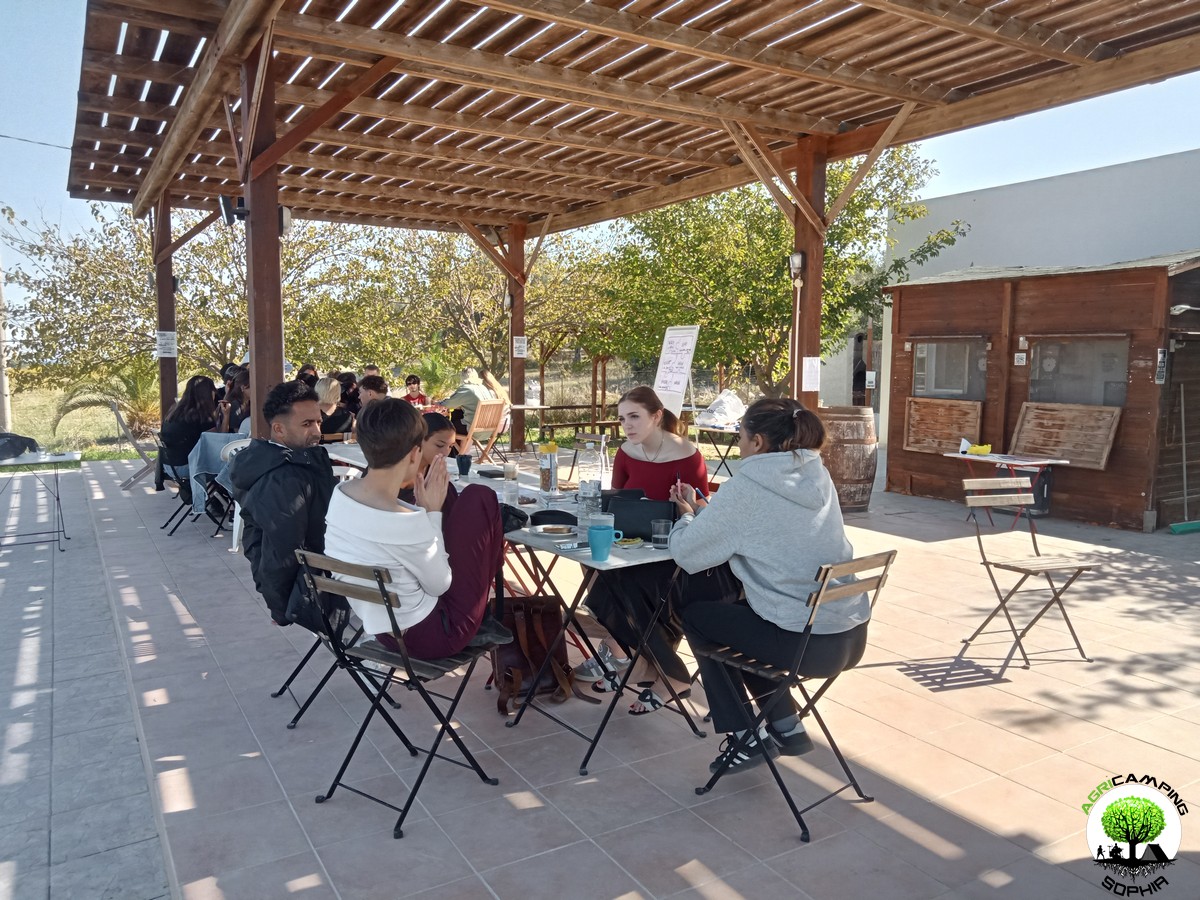 DO YOU WANT TO ORGANIZE AN ERASMUS AT AGRICAMPING SOPHIA?
DO YOU WANT TO ORGANIZE AN ERASMUS AT AGRICAMPING SOPHIA?
WHAT IS AGRICAMPING SOPHIA?
It is a campsite with tent pitches, glamping tents, mobile homes and bungalows
WHERE IS IT?
In Italy, in Sicily, near Syracuse, in Pachino: 36.736883, 15.095610
HOW TO CONTACT US?
info@agricampingsophia.it
(SPEAK ENGLISH) +39 3473079242 – (ONLY SPEAK ITALIAN) +39 3452396095
WHAT DO WE OFFER?
We offer hospitality and catering for Erasmus projects
FOR HOW MANY PEOPLE?
We can have 4-7 single beds in the Socrate Bungalow, 6-10 single beds in the Platone Mobile Homes, 4-6 single beds in the Aristotele Mobile Homes, 4 single beds in the Iblone Mobile Homes, 4 single beds in the single beds in the Empedocle Glamping Tents. In total we therefore have 18 comfortable single places or 31 single places with a fair spirit of adaptation.
IN WHICH PERIOD CAN AGRICAMPING SOPHIA BE AVAILABLE?
The most suitable periods to use our services...
 CART RUTS MODELED ON SOFT ROCK?
CART RUTS MODELED ON SOFT ROCK?
Read also RACK OR HOUSING FOR CLOGS?
Some cart ruts from the Targia district, in Syracuse, and most of the cart ruts from Granatari Vecchi, in Rosolini, give the impression of having been impressed, modelled, on a rock that was originally viscous, not entirely solid. As absurd as this hypothesis may seem, especially in Granatari Vecchi, the softness of the shapes and the at least anomalous uniformity of the rock bank, as if it were a concrete casting, which hosts the cart ruts, is unicum compared to the lithic context in the area.
In Targia this phenomenon is less impressive but if we consider the cart ruts essentially cart tracks, therefore furrowed roads indirectly resulting from the repeated passage of carts along the same route, we do not understand why such uniformity and smoothness is present, in the majority of cases, also on the parts not affected by the passage of the...
 RACK OR HOUSING FOR CLOGS?
RACK OR HOUSING FOR CLOGS?
Read also CART RUTS CUT FROM QUARRIES
In the presence of slopes, even slight ones, in some cart ruts in the Targia district, in Syracuse, central holes are found with a diameter of between 30 and 50 centimeters and a depth of 15-20 centimeters, spaced about 50 centimeters apart. Neither the position (they are not exactly in the center of the cart ruts and perfectly aligned with each other), nor the shape appear perfectly regular: either the passage of time and any wear have profoundly modified their original shape or, simply, they have never had a systematic regularity. However, the offset in position between one hole and another is never completely “off-axis”: there is always a portion about twenty centimeters wide that coincides with the same portion of the previous and subsequent hole. The best preserved and most defined holes are found in the cart ruts usually called Scala...
 CART RUTS CUT FROM QUARRIES
CART RUTS CUT FROM QUARRIES
Back to CART RUTS AND A FEW TOO MANY PROJECTIONS
I will skip any preamble, referring to what has already been written regarding the presence of cart ruts in south-eastern Sicily.
The easy academic tendency has been, in most cases concerning cart ruts, to consider them in terms of the latomie, or quarries, with which very often (for example in the cases of the Targia or Pizzuta districts) they share the same territory.
According to this theory, the carraie would have been indirectly created due to the wear of the rock at each passage of carts or sleds loaded with extracted stone blocks. I will not repeat the arguments presented so far in order to demonstrate that this is a theory that has little solid foundations on an in-depth analysis of the cart ruts. However, I will add a piece by demonstrating the implausibility of a connection between them in both chronological and functional...
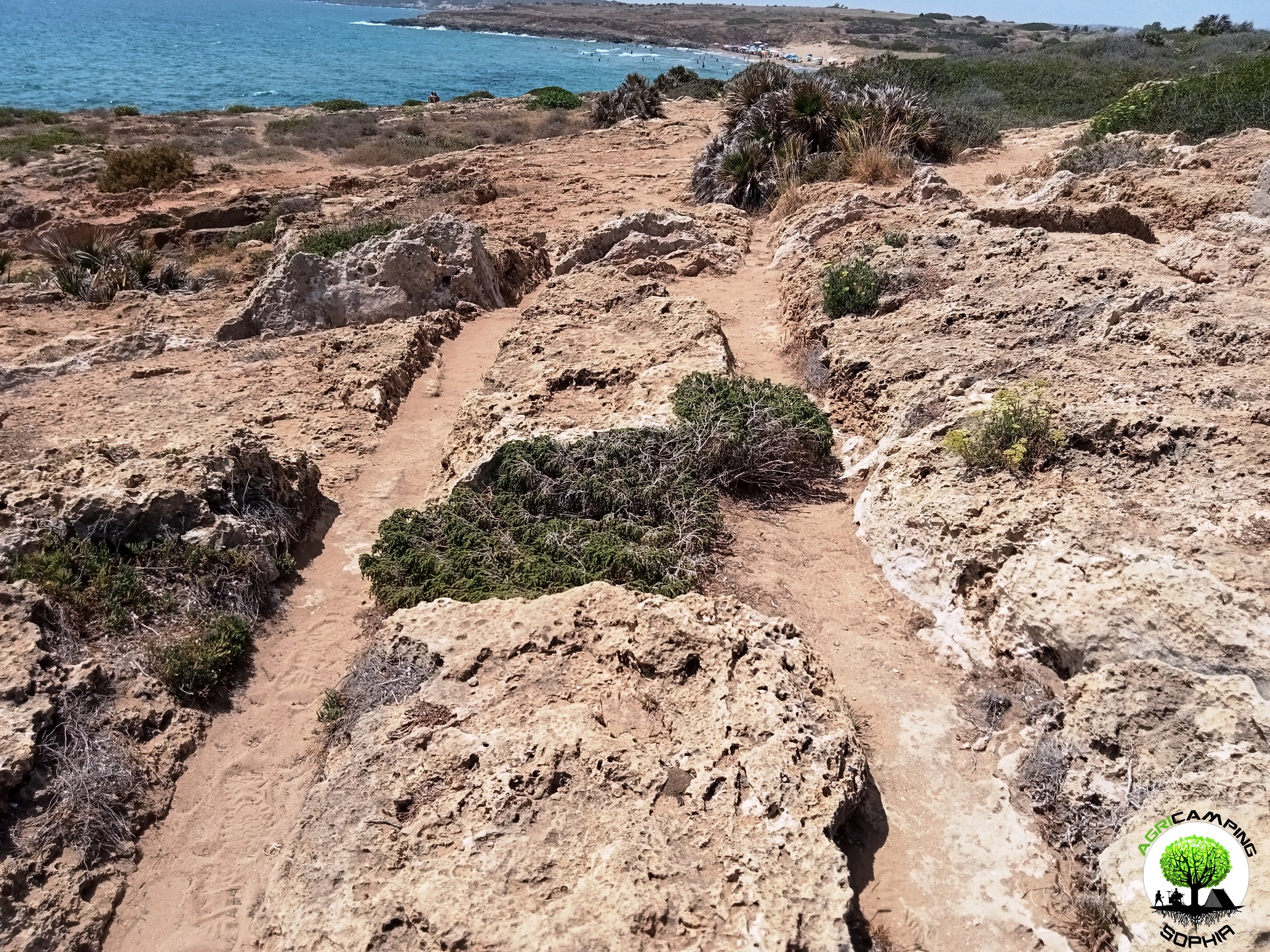 CART RUTS AND A FEW TOO MANY PROJECTIONS
CART RUTS AND A FEW TOO MANY PROJECTIONS
Read also THE POLISHING OF THE CART RUTS
I will skip any preamble, referring to to what has already been written regarding the presence of cart ruts in south-eastern Sicily.Considering the possibility that the cart ruts were gradually dug by the passage of carts pulled by pack animals, for example pairs of oxen, observing certain sections of the cart ruts present in the Granatari Vecchi district, in Rosolini, and in the Pizzuta district, close to the Vendicari Reserve, two questions arise:
1. Why force the animals to pass over rough surfaces and protrusions high, compared to the base of the furrows, even 60-70 centimeters?
2. Why, in the presence of such obstacles, not opt for a detour?
For Mottershead, Pearson and Schaefer such protrusions appeared later, since at the time of the passage of the wagons, a layer of earth covered the rocky bank, thus not making the obstacle...
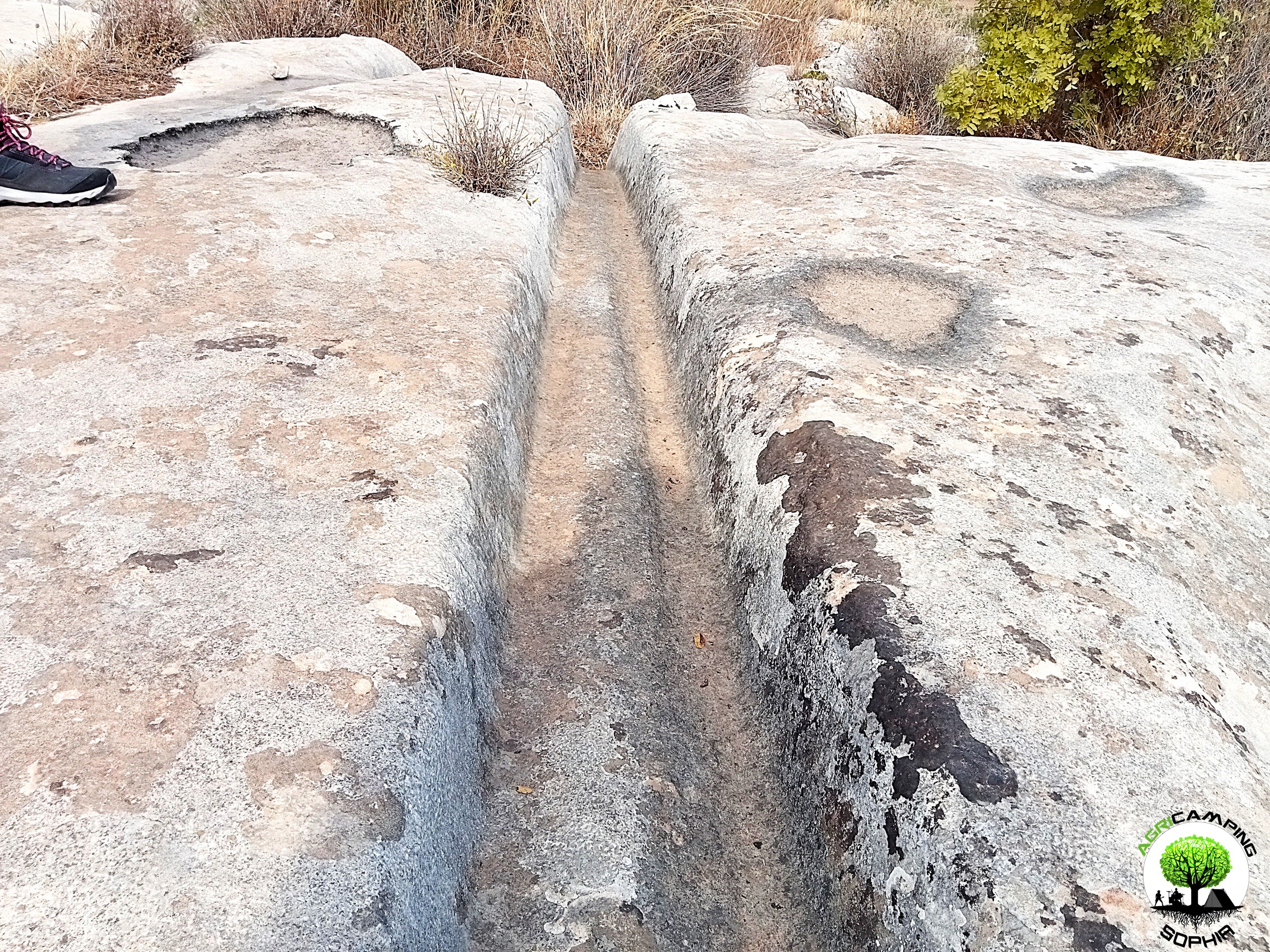 THE POLISHING OF THE CART RUTS
THE POLISHING OF THE CART RUTS
Read also THE PROBLEMATIC EDGES OF THE CART RUTS
I will skip any preamble, referring to to what has already been written regarding the presence of cart ruts in south-eastern Sicily.
To proceed with this comparison I have chosen a probable capital and the corner of a recess present in a block of the northern walls of Eloro that would seem to resemble a pinax, that is, a niche that would have housed a fresco of the heroa, but which a more careful observation refers to a system functional to the grip of the block through a pincer winch. Both elements, like the curt ruts, have remained at the mercy of the elements for millennia, and are therefore subject to comparable wear and tear due to the passage of time. The finishing of the capital should be of a high standard, since it is an architectural element that also has an aesthetic function. The recess, on the other hand, should have...
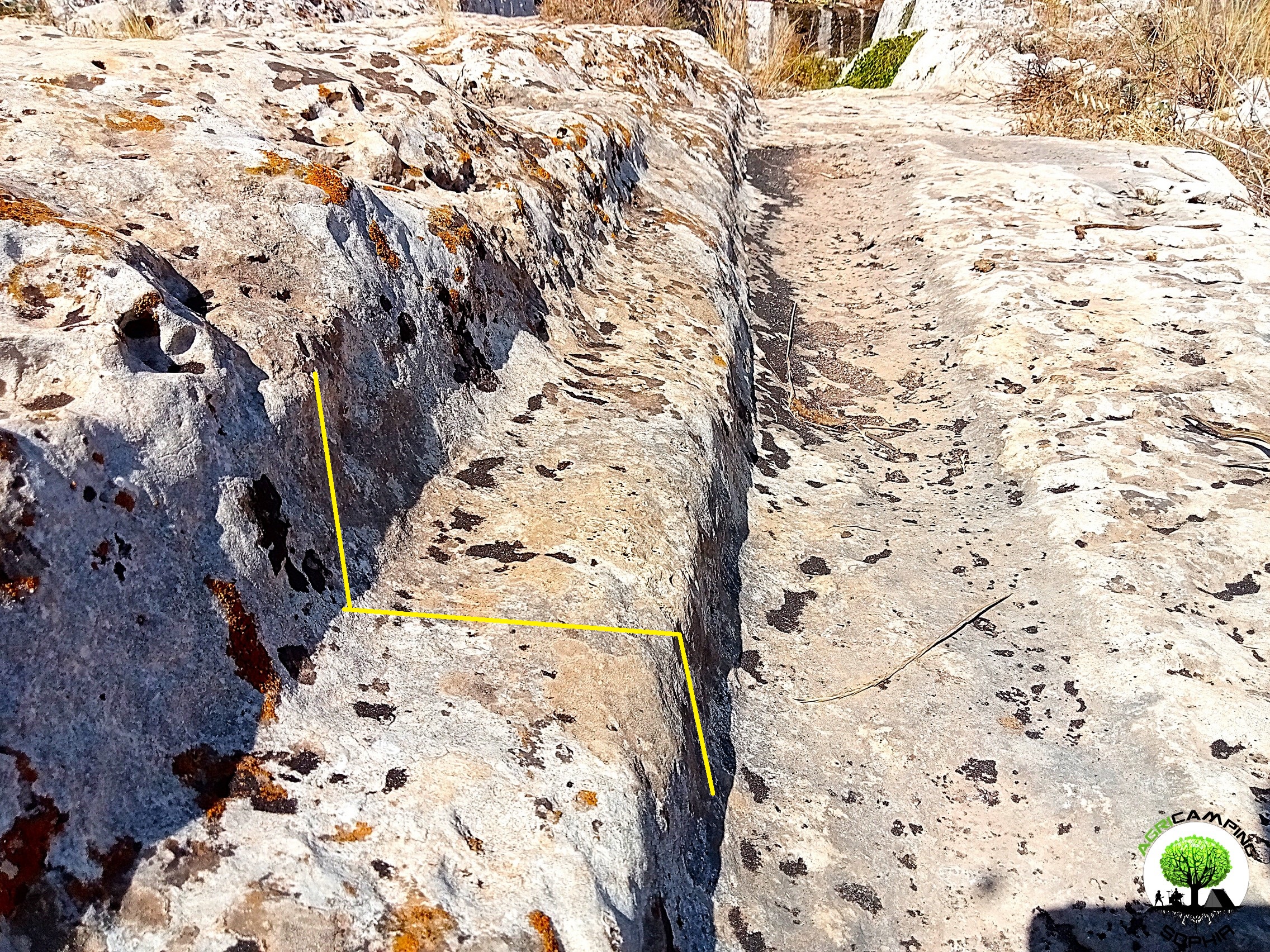 THE PROBLEMATIC EDGES OF THE CART RUTS
THE PROBLEMATIC EDGES OF THE CART RUTS
I will skip any preamble, referring to to what has already been written regarding the presence of cart ruts in south-eastern Sicily.As can be seen in other sites around the world, in some cart ruts I visited, in particular in the Cugni district in Pachino, in the Granati Vecchi district in Rosolini and in the Targia district in Syracuse, a clear border can be seen, a sort of frame, next to the grooves, more marked externally, barely noticeable internally.
The borders I measured have a width of 14-20 centimeters and a height of 8-10 centimeters.
Not all cart ruts have such frames present or particularly evident, regardless of the degree of wear or degradation. They are found above all in cart ruts with less deep grooves.
As already described in detail, given the presence of furrows with a depth of even 65-70 centimeters, the wheels of a possible vehicle would have had to have a...
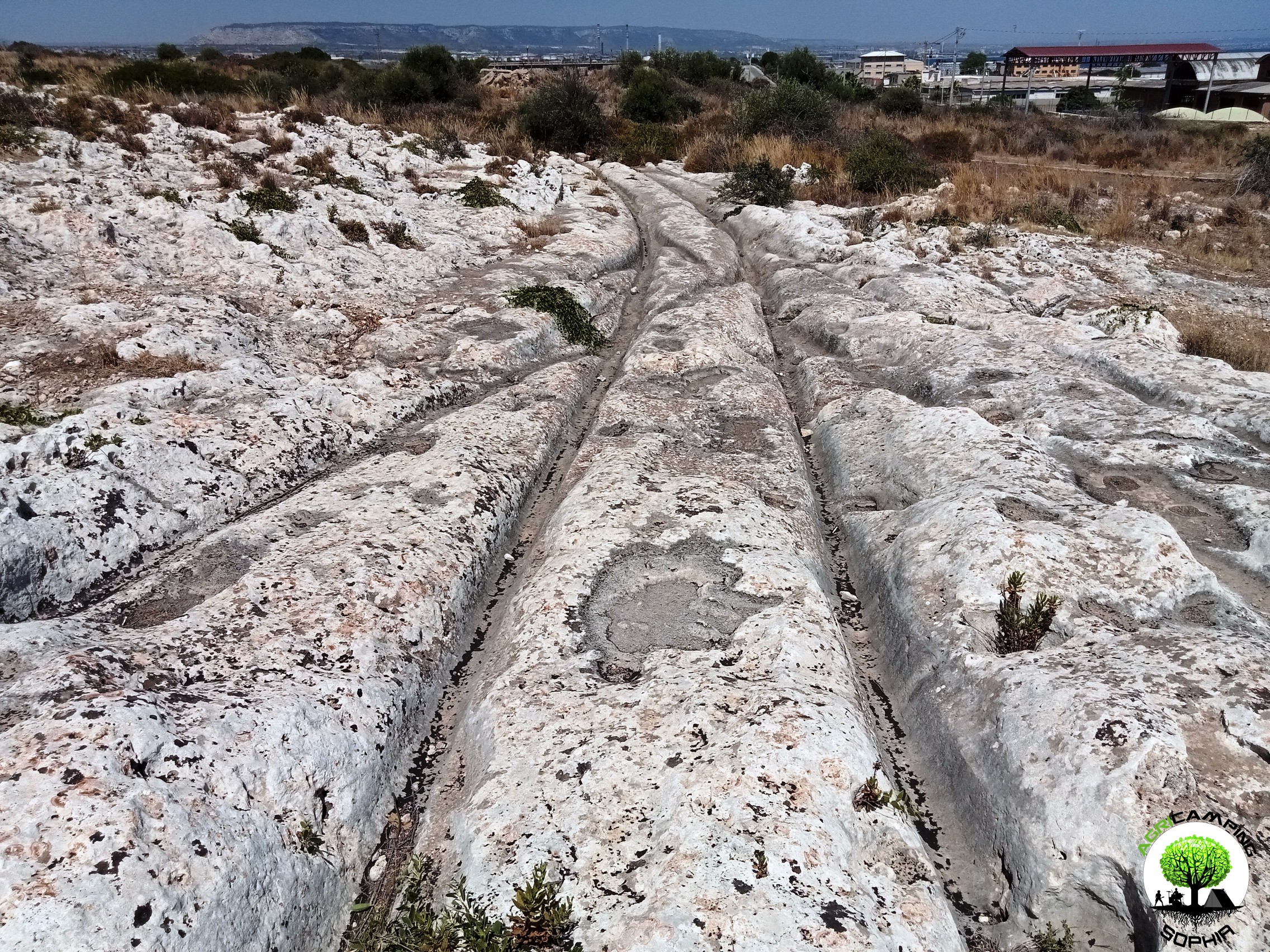 THE PROBLEM OF CART RUTS IN SOUTH-EASTERN SICILY (PART FOUR)
THE PROBLEM OF CART RUTS IN SOUTH-EASTERN SICILY (PART FOUR)
Click here to return to third part
Clapham Junction
As in the Maltese site Misrah Ghar Il-Kbir, also in the Targia and Granatari Vecchi districts the cart ruts intersect and cross each other in a similar way to the track switches in a railway station. The nickname Clapham Junction that was given by David H. Trump to the Maltese site, derives precisely from the similarity with the famous English railway station. For Sagona these are agricultural furrows and water channels, for Mottershead, Pearson and Schaefer these are abandoned paths due to obstacles and wear. Obviously we do not know what the morphology of the Syracuse and Rosolini territory was at times when the cart ruts were traced, but considering the current context, there certainly would have been no agricultural reason to build them, given the presence of fertile land, springs and fresh water courses just a few kilometers...



 DO YOU WANT TO ORGANIZE AN ERASMUS AT AGRICAMPING SOPHIA?
DO YOU WANT TO ORGANIZE AN ERASMUS AT AGRICAMPING SOPHIA? CART RUTS MODELED ON SOFT ROCK?
CART RUTS MODELED ON SOFT ROCK? RACK OR HOUSING FOR CLOGS?
RACK OR HOUSING FOR CLOGS? CART RUTS CUT FROM QUARRIES
CART RUTS CUT FROM QUARRIES CART RUTS AND A FEW TOO MANY PROJECTIONS
CART RUTS AND A FEW TOO MANY PROJECTIONS THE POLISHING OF THE CART RUTS
THE POLISHING OF THE CART RUTS THE PROBLEMATIC EDGES OF THE CART RUTS
THE PROBLEMATIC EDGES OF THE CART RUTS THE PROBLEM OF CART RUTS IN SOUTH-EASTERN SICILY (PART FOUR)
THE PROBLEM OF CART RUTS IN SOUTH-EASTERN SICILY (PART FOUR)